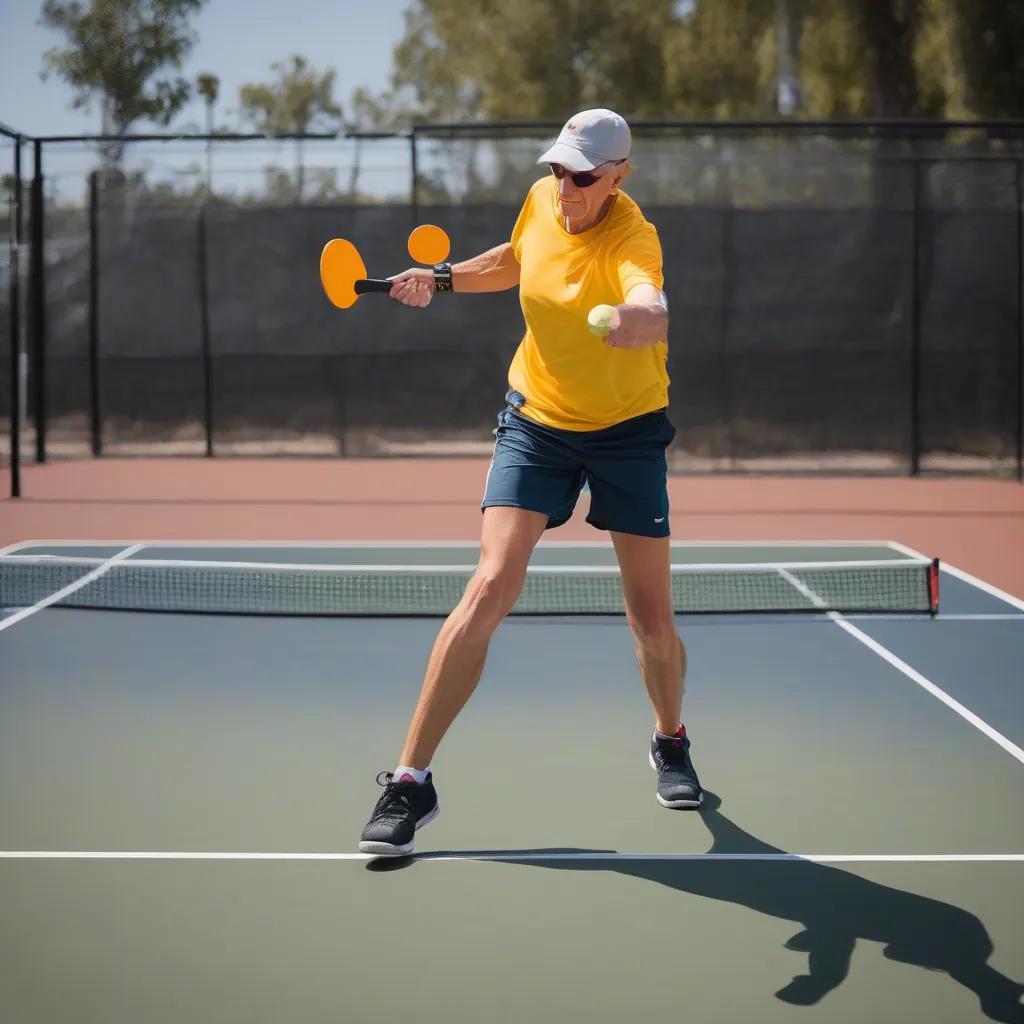Imagine this: you’re locked in a thrilling pickleball rally, the ball pinging back and forth. You’re holding your ground at the baseline, returning shots with precision. But something’s missing – the aggressive edge, the ability to dictate the point. The key? Mastering the strategic transition from baseline to the net. This crucial maneuver can transform your game, turning defense into offense and setting you up for winning shots. In this article, we’ll delve deep into the tactics, techniques, and drills to help you confidently and effectively move forward in pickleball.
Understanding the Importance of the Transition
Why is transitioning to the net so critical in pickleball? It’s simple: the closer you are to the net, the more angles you can create and the less time your opponent has to react. This allows you to take control of the rally and finish points decisively with volleys and put-aways. Staying back at the baseline often leaves you vulnerable to aggressive opponents and limits your attacking options. Think of it like this: would a boxer prefer to jab from a distance or deliver a knockout punch up close? The net is your opportunity for the pickleball equivalent of that knockout punch.
Key Techniques for a Smooth Transition
Transitioning to the net isn’t just about running forward; it’s a calculated movement requiring proper technique and strategy. Here’s a breakdown of the key elements:
The Third Shot Drop
The foundation of a successful transition often lies in the third shot drop. A well-executed drop shot forces your opponents deep, giving you time to move forward while they retreat. Focus on a soft, controlled shot that lands just over the net and dies in the kitchen. Check out this resource on effective drills for mastering third shot drops: Effective Drills for Mastering Third Shot Drops.
Moving Forward as a Team
In doubles, communication and coordinated movement are paramount. Both players should move forward together, maintaining a balanced position relative to each other and the net. This prevents gaps in your defense and creates a formidable wall at the non-volley zone line. Learn more about doubles strategies: Key Beginner Strategies for Pickleball Doubles Play.
Footwork Fundamentals
Quick, agile footwork is essential for a smooth transition. Practice short, controlled steps to maintain balance and react quickly to your opponents’ shots. As you move forward, stay light on your feet, ready to adjust your position and execute volleys. You can also find some useful training strategies to improve your footwork and overall performance here: Training Strategies to Boost Pickleball Performance.
Reading Your Opponent
Anticipating your opponent’s shots is key to a successful transition. Watch their paddle position, body language, and previous shots to predict where they’ll hit the ball. This allows you to move forward proactively and position yourself for the volley. Understanding how to read your opponent also helps in returning their shots effectively: Effective Ways to Practice Pickleball Returns.
Drills to Hone Your Transition Skills
Practicing specific drills can significantly improve your transition game. Here are a few effective exercises:
Third Shot Drop and Volley Drill
This drill focuses on executing a consistent third shot drop and quickly moving forward for a volley. Have one player feed drops while the other practices their transition and volley.
Doubles Transition Drill
This drill emphasizes coordinated movement and communication in doubles. Both partners practice their transition together, focusing on maintaining a balanced position and covering the non-volley zone.
Live Ball Transition Drills
Incorporate live ball drills to simulate game situations. Practice transitioning to the net after serving, returning, and during rallies. This helps develop your court awareness and decision-making skills under pressure. For improving your dinking skills which are crucial at the net, check out: Drills to Enhance Strategic Dinking Skills.
 Pickleball Transition to Net
Pickleball Transition to Net
Advanced Strategies for Net Play
Once you’ve mastered the transition, focus on refining your net game. These advanced strategies can elevate your play to the next level:
The Soft Game
Developing a soft game, including dinking and drop shots, can keep your opponents off balance and create opportunities for put-aways. “A soft game is like a chess match at the net,” says a leading pickleball coach. “It’s about precision and strategy, not just power.”
Aggressive Volleying
Don’t be afraid to be aggressive at the net. Look for opportunities to put the ball away with sharp volleys. However, balance aggression with control to avoid unforced errors. As legendary pickleball player Simone Jardim recommends, “Aggressive volleying is about taking calculated risks, not just hitting the ball hard.”
Communication and Positioning in Doubles
In doubles, communication is key. Call out shots, cover each other’s positions, and maintain a strong presence at the net. “Pickleball doubles is a team sport,” explains a top-ranked doubles team. “Clear communication and strategic positioning are essential for success.”
- Baker, Joe (Author)
- English (Publication Language)
- Bond, Payton (Author)
- English (Publication Language)
- Anderson, Brian (Author)
- English (Publication Language)
- Palcic, Lisa (Author)
- English (Publication Language)
- Foster, Blake (Author)
- English (Publication Language)
- Carnot, Prem (Author)
- English (Publication Language)
- Hall, Dennis (Author)
- English (Publication Language)
- Callahan, John (Author)
- English (Publication Language)
- Publishing, Fitness Research (Author)
- English (Publication Language)
- Arthur, S. M. (Author)
- English (Publication Language)
Conclusion
Mastering the strategic transition from baseline to the net is a game-changer in pickleball. By understanding the techniques, practicing drills, and refining your net game, you can transform your play and become a more dominant force on the court. Remember, it’s a process that takes time and dedication. But with consistent effort and a focus on these key strategies, you’ll soon be confidently transitioning to the net, dictating rallies, and finishing points with authority. Now, go out there, practice, and elevate your pickleball game! We’d love to hear about your experiences. Share your thoughts, tips, and questions in the comments below. And don’t forget to share this article with your fellow pickleball enthusiasts!









